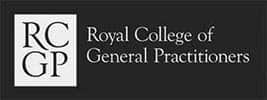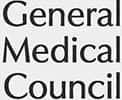
When it comes to achieving a chiselled jawline, using dermal fillers to enhance the jawline for men and women is generally considered one of the most effective non-surgical treatments available. More recently, another type of cosmetic surgery procedure has been trending, buccal fat removal.
These procedures can enhance the appearance of the jawline and create a more defined look, but they work in very different ways. In this blog post, we’ll explore how to get a defined jawline and the differences and pros and cons of fillers versus buccal fat removal.
Dermal fillers are a gel-like substance injected into the skin to add volume, smooth out wrinkles, and enhance facial features. Our London aesthetic clinic uses hyaluronic acid (HA) dermal filler for jawline enhancement. As hyaluronic acid (HA) filler is a natural substance found in the body, it has been used for decades for non-surgical treatments.
Numerous studies have shown that hyaluronic acid (HA) filler is considered to be extremely safe, with low rates of complications. Additionally, unlike other fillers, hyaluronic acid (HA) filler is easy to dissolve if you do not like the results.
Hyaluronic acid (HA) filler can provide a subtle yet noticeable improvement or a significant difference in your jawline. This is why ensuring your fillers are administered by an experienced medically trained aesthetic practitioner, such as a doctor or nurse, is so important. Typically, the results will last anywhere from 12 to 18 months, depending on your health and lifestyle.
Dermal fillers for men can make an immediate difference and have no downtime.
• Dermal fillers are a non-invasive procedure, meaning that there is no need for incisions or anaesthesia.
• No downtime is required after a filler treatment, and most patients can resume their normal activities immediately after the procedure.
• The amount and placement of the filler can be adjusted to achieve the desired level of definition in the jawline.
• The effects of fillers are not permanent, and repeated treatments will be necessary to maintain the desired look.
• Fillers can only add volume to the jawline and cannot remove excess fat or tissue.
• As with any aesthetic procedure, there is a risk of infection at the injection site.
Buccal fat removal is a surgical procedure involving removing the buccal fat pads, which are located in the cheeks and can contribute to a “chipmunk” appearance. Removing a portion of these fat pads can make the jawline more defined and contoured.
• Once the buccal fat pads are removed, the results are permanent.
• Buccal fat removal can significantly improve the appearance of the jawline.
• The incisions for buccal fat removal are made inside the mouth, meaning there is no visible scarring.
• Buccal fat removal requires incisions which can increase the risk of a post-surgical infection and other complications.
• You may have swelling and discomfort for the first few weeks as the sutures dissolve and your incision heals.
• Not everyone is a good candidate for buccal fat removal, and the procedure may not be suitable for those with very thin faces or a history of oral health problems.
• As you get older, your buccal fat decreases, and removal is not recommended if you are over 40.
Deciding between dermal fillers and buccal fat removal for a chiselled jawline ultimately depends on your individual goals, preferences, and anatomy. If you are looking for a subtle improvement in your jawline’s appearance and do not want to have invasive cosmetic surgery, fillers may be a good option.
However, buccal fat removal may be the better choice if you want a more dramatic and permanent improvement. At Harley Street MD, Dr Chan has years of experience administering hyaluronic acid (HA) filler to enhance the jawline, chin and cheeks.
If you want to know more about jawline reshaping at Harley Street MD aesthetic clinic in London, contact us for a free dermal filler consultation to discuss your specific needs and desired results.







